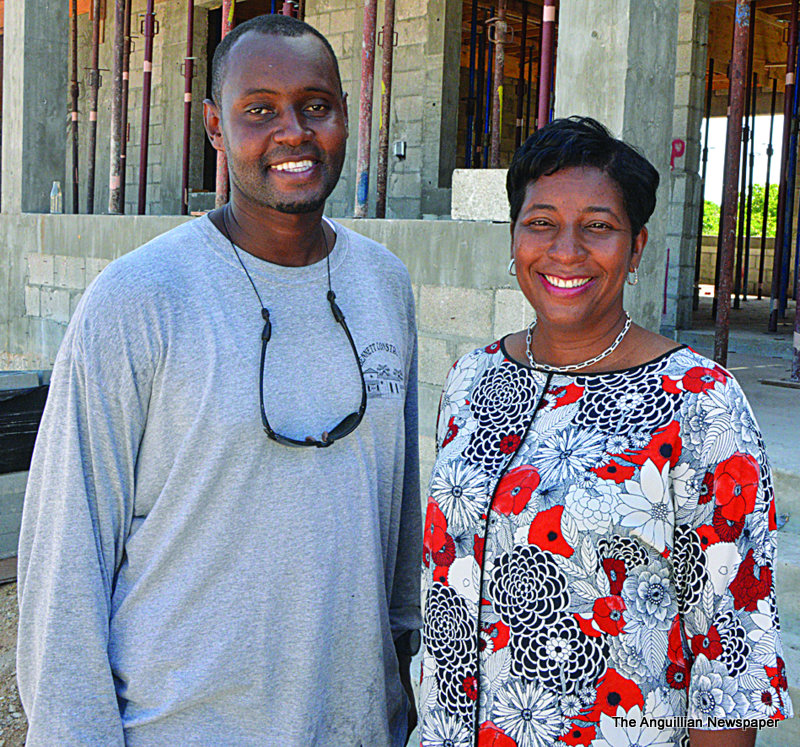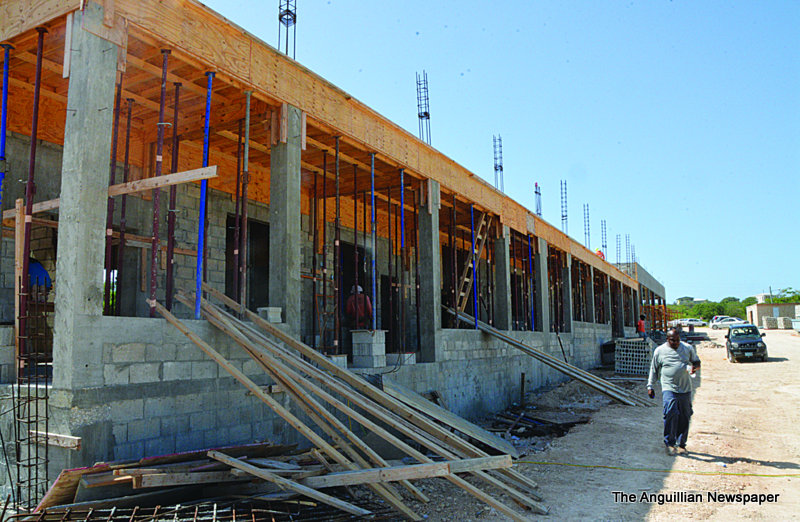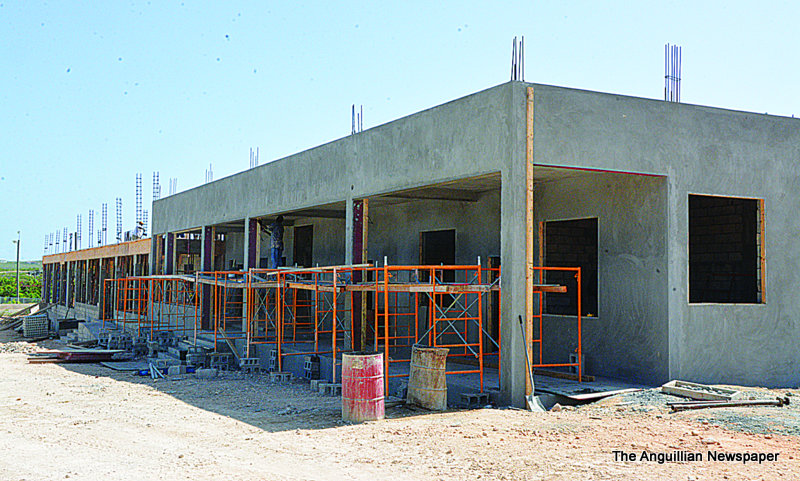What distinguishes the Morris Vanterpool Primary School, at East End, now under construction, from the other primary schools in Anguilla, is that it is being completely rebuilt.
In comparison, new classrooms are under construction at the Adrian T. Hazell Primary School; The Valley Primary School; and the Orealia Kelly Primary School. Some additional construction work has been completed at the Vivien Vanterpool Primary School for a Computer and Music Room; and at the Alwyn Allison Richardson Primary School, repairs have already been carried out on the roof of the building. Apart from the primary schools, a new Albena Lake-Hodge Comprehensive School is under construction.
The work on the schools followed the devastation caused by Hurricane Irma in September 2017 – and the provision of sixty million pounds by the UK Government to finance various public sector projects including education and health facilities.

Mr Delroy Vanterpool and
Mrs Cora Richardson-Hodge

View of the school block and facilities
The Morris Vanterpool Primary School was the last of the primary school projects to be tackled. Among the reasons is that it had to be designed from scratch, so to speak, notwithstanding that it is being constructed at the same site where the previous building, badly compromised by the hurricane, had to be demolished. Just down from the two- storey new building, in the area where the old East End School, built in 1917 stood, are a number of new school facilities also under construction.
The project contractor is Mr. Leonard Bennett, of Bennett’s Construction, who was also awarded the contract for the Adrian T. Hazell School project. The bid for the Morris Vanterpool School amounted to 4.1 million US dollars – and the work is being supervised by Bennett’s son, Delroy Vanterpool.
The Anguillian newspaper met Delroy Vanterpool and the former Minister of Education, Mrs. Cora Richardson Hodge, at the Morris Vanterpool School’s building site several days ago. Mrs. Richardson Hodge, the Elected Member for East End/Sandy Hill, is now the Leader of the Opposition in the Anguilla House of Assembly.
Quizzed about the project, Vanterpool, a confident and assertive young man, told the newspaper that construction work started in December 2019 and that March 2021 is the projected date for completion. There is an average of between 47 and 65 workers on the job; and the classroom block is designed for an upstairs section, if necessary, in the future.
“This is my first project of this scale. I have supervised other projects before, including some hotels,” Vanterpool said, his voice drowned out by the dragging of steel for the roof of the school.
Mrs. Richardson-Hodge, the former Minister of Education, who had the opportunity to oversee the various school projects, commented: “I am actually very proud and excited as to where the Morris Vanterpool School is now. The construction team has done an excellent job and, from what I am seeing, it is a very comprehensive project. The school is being built in its entirety with all the necessary features for the children and the staff; and it was the only primary school that had to be demolished entirely. We took the opportunity to rebuild from the ground up – and in a way to ensure that all the necessary facilities for the school were put in place. As I said, I am very proud and pleased to see what is being done here by Bennett Construction.”
She noted that, technically speaking, the school is situated in District 1, but, according to her, it has been adopted as part of District 2, East End. She went on: “I attended school here for a couple of years and so it means a lot to me to see what is happening here now. I recall that after Hurricane Irma, I was very shocked to realise that the school was not built out of concrete. It was made from a steel frame. That is why the damage was so extensive – and the school had been around for quite a time. We thought we should redesign the school properly for the sake of our children and the community. I know this new structure will take us into 30, 40 or 50 years because, by the way it has now been designed, there is the ability to construct additional classrooms as the school and the community grow.”
The former Minister of Education is delighted that the school has a number of new supporting facilities. “There is an auditorium for graduations and assembly meetings,” she observed. “Currently, the children stand outside in the sun when they are having assembly; then there is a cafeteria and a kitchen which we did not have before – so when we begin to provide meals for the children we will have that space available. We also have a nursing station; a multi-media room; a music room; a reading room; a science room and other facilities. It is ideal that every school should have these facilities and so, since we have to build from the ground up, we may as well do it properly.”
Mrs. Richardson Hodge said the location for the school was looked at during the design stage, but no change was decided on. “As everyone knows, we don’t have the type of space for sports, and other open areas, and so we had to design the school in a way that would utilise the available space more fully,” she explained. “That’s why the construction is in a u-shape so that the children can utilise the rest of the space as an open area. We looked at other options, but they would have been costly. This is because we would have had to acquire land and then build from the ground up – and so the cost would have been prohibitive. We therefore decided to stick to the space we had and to utilise it to the best of our ability.”
She is grateful to the UK Government and the British taxpayers for the financial assistance given to Anguilla. “The sixty million pounds was distributed among the various health and education facilities, as well as the many other projects now taking place in Anguilla,” she acknowledged. “Without that we would not have been able to do this work.”
The Morris Vanterpool Primary School is an outgrowth of what was originally called “The East End Elementary School” which was built in 1917. It was a 50×30-foot un-partitioned and twin-roofed wooden structure. It provided early education for many prominent Anguillians thereby earning the nickname “the University of East End”.
The building was used later for community functions and as a hurricane shelter. It withstood several hurricanes and was eventually turned over to the Anguilla National Trust which substantially renovated it and put it up for rent. Unfortunately, it was destroyed by Hurricane Irma. The old East End School is the subject of a 70-page book written by Mr. Colville Petty entitled: “A School and its Community 1917-1974.”







